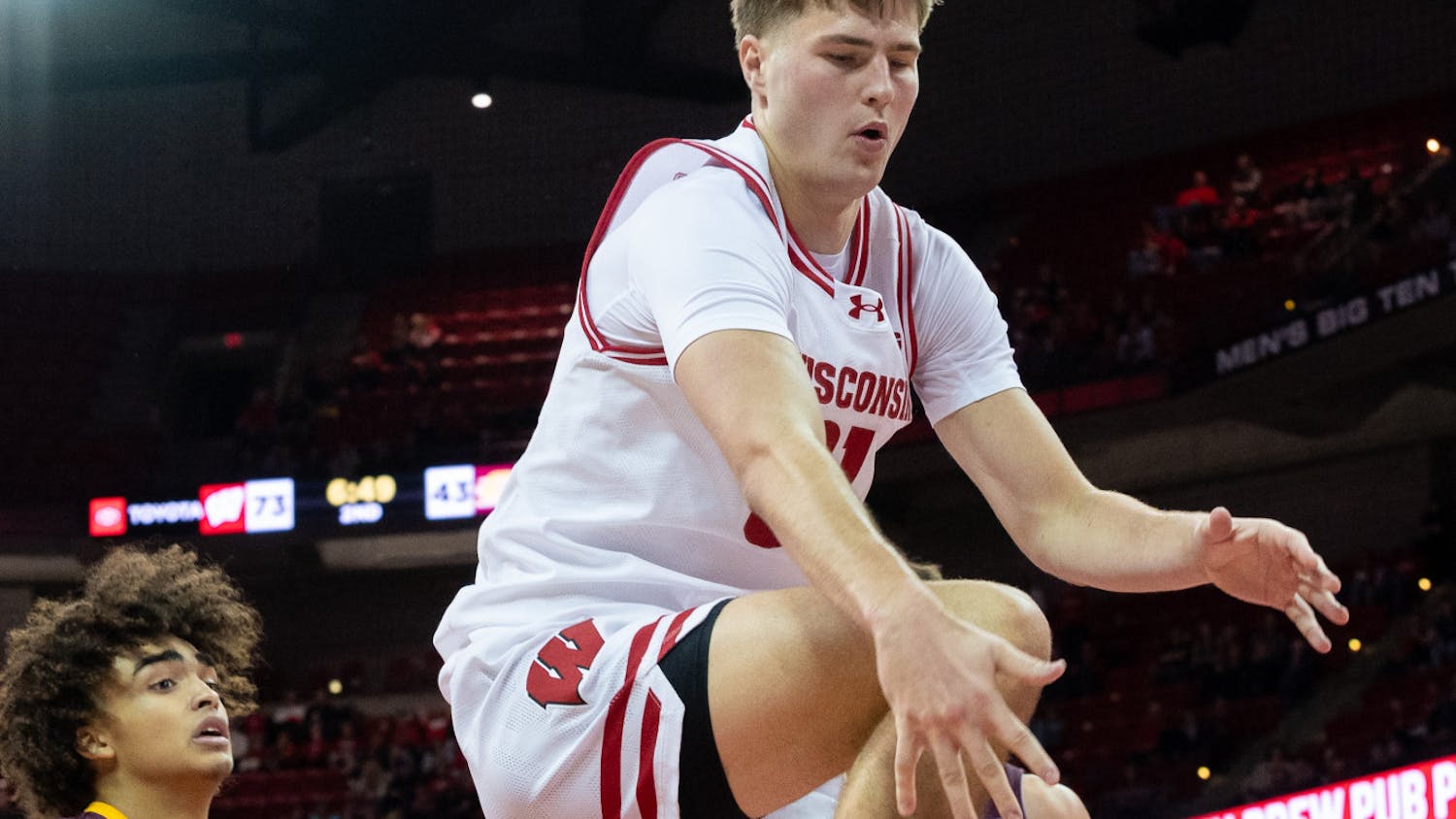A panel featuring a professor, an administrator and a regent examined the complex reasons, implications and possible solutions of the rising costs of higher education Thursday.
Several higher-education-based groups hosted the event, including The Public Representation Organization of the Faculty Senate, the Tommy G. Thompson Center on Public Leadership, the Wisconsin Center for the Advancement of Postsecondary Education and the Academic Staff Professionals Representation Organization.
William & Mary economics professor David Feldman, who wrote a book on the subject of college costs, began the forum by sharing his explanations for rising prices.
Feldman cited Baumol’s Cost Disease, which explains how costs rise over time in all industries — even ones that don’t experience productivity growth. While it is quicker to manufacture a car today than it was 50 years ago, higher education’s timeline has stayed relatively the same, he discussed. However, the products of both become more expensive.
Another factor Feldman brought up was the concept of “standard of care.” Once universities discover a better way of teaching, they can’t use old methods any more. This applies to expense when subjects like STEM require new technology to teach concepts.
While these factors are generally driven by positive influences such as economic growth, they can become a problem when affordability enters the equation, Feldman said.
“The real issue isn't ‘why does college cost more this year?’ That's happening in all services,” Feldman said. “The problem is ‘why are certain groups having resource issues in paying for it?’ — and that's largely a matter of our aid system and our changing income distribution.”
Then, the issue becomes how to convince the state to “loosen the purse strings” so schools can invest more in financial aid and how universities can get the word out about the real cost of college, he said.
An important factor when discussing college affordability is to look past a university’s “sticker price,” or what it costs before financial aid and scholarships are factored in, Feldman said.
Applicants in the top 1 percent often set schools’ sticker prices, which are then discounted back for other students through additional financial programming, according to Feldman.
“If you were to take the full list-price tuition at a highly selective — or shall we say 'elite' — private institution in the United States and ask, 'What has happened to the percentage of the income of a top-1-percenter who sends their son or daughter to an elite institution?’ Despite soaring tuition, that percentage has fallen over time,” Feldman said. “College has become far more affordable for families in the top 1 percent.”
Sometimes institutions with these higher sticker prices can subsidize the tuition of low-income students more easily than those with lower sticker prices, UW-Madison Vice Chancellor for Finance and Administration Laurent Heller said.
One way resources across the UW System could be utilized better is through centralizing decision-making, which would increase efficiency and save money, UW System Regent Tracey Klein said.
However, Feldman disagreed, saying centralization rules can be hard to change once in place and it would take entrepreneurial decisions away from individual campuses.
Heller took the middle position, acknowledging that the UW System is on the side of too decentralized, but adding that different campuses have a variety of needs.
“Around the state, needs may differ to some extent, so from my perspective in the management puzzle, it's really about finding the right and optimal level of aggregation,” Heller said. “Ultimately, the lowest cost that doesn't meet needs actually isn't the lowest cost.”
Heller said institutions of higher education have a “playbook” of ways to bend the cost curve.
At UW-Madison, the university has formed a group to look for nontraditional revenue sources, Heller said. With more revenue coming in, UW-Madison can invest more in programs like Bucky’s Tuition Promise, which guarantees full tuition for low-income Wisconsin residents.
However, under the UW System’s ongoing tuition freeze for in-state students, universities have less money coming in, which means other expenses are higher, Heller said.
The tuition freeze is coupled with what Feldman said was another driver of increasing college costs: a decrease in state effort. State effort — dollars per thousand of state personal income — has fallen 29 percent in Wisconsin since the Great Recession, meaning “Wisconsin has suffered more than many other states have” over the past decade, Feldman said.
This decrease has to do with what else states are investing in, Feldman said. It’s easier to justify taking money away from higher education because it has its own revenue source, unlike other services the government puts money into.
Klein recounted when President of Arizona State University Michael Crow told the Board of Regents state aid has dropped and is unlikely to return. While Wisconsin’s funds from the state aren’t “robust,” Klein said the UW System is better off than some in other states.
“The way that I look at it from this standpoint of the Board of Regents is we are smart people and we do have revenue sources, and we are going to have to be creative and innovative and really expand what we're doing,” she said.
However, Heller is choosing to be optimistic. With national conversations now involving higher education costs more prominently, especially in the Democratic Debates, he said solutions will be found.
“I think [higher education is] the smartest investment that the state can make and that the federal government can make, and I really hope that they'll see that and find ways to put their money where their mouth is,” Heller said.






